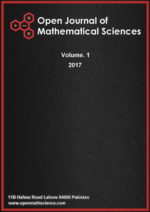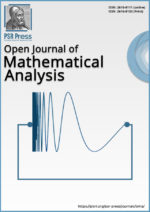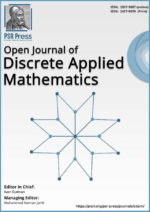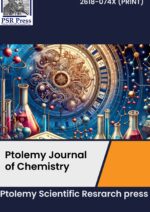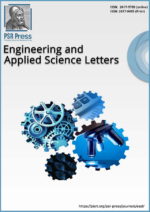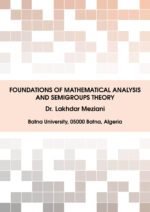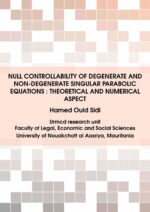Ptolemy Scientific Research Press (PSR Press)is a highly regarded publisher of scientific literature dedicated to bringing the latest research and findings to a broader audience. With a focus on cutting-edge research and technology, Ptolemy Scientific Research Press offers a range of publications catering to professionals, researchers, and student’s needs. Whether looking for information on the latest breakthroughs in physics, biology, engineering, or computer science, you can trust Ptolemy Scientific Research Press to deliver insightful, accurate, and engaging content. With its commitment to quality, accessibility, and innovation, Ptolemy Scientific Research Press is an essential resource for anyone interested in science and technology.

Latest Published Articles
EASL-Vol. 2 (2019), Issue 2, pp. 01–09 Open Access Full-Text PDF
Babar Azeem, Zahid Ullah, Faisal Rehman, Sahibzada Muhammad Ali, Bilal Arif, Aun Haider
Abstract: This paper investigates the rotor and stator faults of synchronous and asynchronous machine. We studied major and minor faults and failures in synchronous and asynchronous machines (SAASMs) to avoid excessive downtime, maintaining quality of service, and minimum revenue losses to smart grid (SG) operators and planners. Further, faults detection, faults diagnosis, major causes of faults, and fault remedial measures are discussed with state-of-the-art work for: (a) transformers, (b) stator, and (c) rotor. Our work presents detailed taxonomy of rotor and stator faults, electrical and mechanical stress, and faults diagnosis schemes for stable SG operation. We believe that our research contribution is more versatile covering every aspect of SAASMs faults and failures, compared to prior works.
Modified Abbasbandy’s method free from second derivative for solving nonlinear equations
OMS-Vol. 3 (2019), Issue 1, pp. 109–114 Open Access Full-Text PDF
Sahar Saba, Amir Naseem, Muhammad Irfan Saleem
Abstract: The boundary value problems in Kinetic theory of gases, elasticity and other applied areas are mostly reduced in solving single variable nonlinear equations. Hence, the problem of approximating a solution of the nonlinear equations is important. The numerical methods for finding roots of such equations are called iterative methods. There are two type of iterative methods in literature: involving higher derivatives and free from higher derivatives. The methods which do not require higher derivatives have less order of convergence and the methods having high convergence order require higher derivatives. The aim of present report is to develop an iterative method having high order of convergence but not involving higher derivatives. We propose three new methods to solve nonlinear equations and solve text examples to check validity and efficiency of our iterative methods.
Boundedness of commutators on herz-morry-hardy spaces with variable exponent
OMS-Vol. 3 (2019), Issue 1, pp. 94–108 Open Access Full-Text PDF
Omer Abdalrhman, Afif Abdalmonem, Shuangping Tao
Abstract: In this paper, we obtain the boundedness of commutators generated by the Calderón-Zygmund operator, BMO functions and Lipschitz function on Herz-Morrey-Hardy spaces with variable exponent \(HMK^{\alpha(\cdot),q}_{p(\cdot),\lambda}(\mathbb{R}^{n})\).
Robust estimators incorporating voltage and current phasors from PMUs
EASL-Vol. 2 (2019), Issue 1, pp. 48–59 Open Access Full-Text PDF
Farhan Ammar Ahmad, Ibrahim Omar Habiballah
Abstract: State Estimation is the backbone of modern electric power system and is used by almost all Energy Management Systems (EMS) in the world to ensure the real-time monitoring and secure operation of a power system. Phasor Measurement Unit (PMU) is most popular meter in today’s electrical power industry because of its high refresh rates and measurement accuracy. Meanwhile, state estimation with only PMUs is not practical because of the very high initial installation cost. Consequently, the use of PMU meters along with conventional Supervisory Control and Data Acquisition (SCADA) meters can improve the performance of the state estimation. In this paper, phasor measurements (voltage and current phasors) are incorporated in two robust estimators: Weighted Least Absolute Value (WLAV) and Least Measurement Rejected (LMR). Further, we have investigated the importance of locating PMUs to save cost and improve the performance of state estimation. The performance of these two estimators after incorporating voltage and current phasors is investigated in terms of estimation accuracy of state variables and computational efficiency in the presence of different bad-data scenarios on IEEE-30 and IEEE-118 bus systems.
A method to compute the determinant of square matrices of order five and six
OMS-Vol. 3 (2019), Issue 1, pp. 84–93 Open Access Full-Text PDF
Armend Salihu
Abstract: In this paper we present a new method to compute the determinants of square matrices of order 5 and 6. To prove the main results we have combined the Farhadian’s Duplex Fraction method and Salihu’s method to reduce the order of determinants to second order. Hence, this paper gives the possibility to develop a general method to compute the determinants of higher order.
Box-Behnken design of quadratic model for Gas Metal Arc Welding (GMAW) and optimization analysis on desirability function
EASL-Vol. 2 (2019), Issue 1, pp. 38–47 Open Access Full-Text PDF
Kashif Nazir, Anwar Khalil Sheikh, Muhammad Asad Ahmad
Abstract: Gas Metal Arc Welding (GMAW) is one of those welding processes which is increasingly being used in many varieties of fabrication and manufacturing industries due to high production rate and ease of work such as fewer fumes/smoke and less time chipping slag. Important parameters which affect GMAW process are amperage, arc length, wire feed speed, welding speed and welding voltage. In this paper, we have focused and studied important controllable factor’s effects on depth of penetration, deposition efficiency, bead width and bead reinforcement to find best weld during welding in mobile or outdoor welding shop in stress and overloaded conditions by Box-Behnken design of quadratic model for GMAW process and optimization analysis on desirability function. Quality of welds is defined as “the level of perfection that welds exhibit pertaining to the entire volume of weldment as well as to the profile of weld surface appearance”. With reference to quality weld definition as defined above, the study is performed to find out the best welding condition whereas best weld is the weld with deposition efficiency value as larger the best, depth of penetration value with “larger the best”, bead width value “nominal the best”, discontinuities number per weld’s count value “smaller the best”. Productivity in term of quality is defined as an optimum blend of parameters which inevitably develop minimum or no defect then the process will result in high productivity. For given certain material and similar welding circumstances, our analysis has found the most optimal factor’s values for the similar condition of field data. This study will contribute welding research work in terms of points as described, firstly to enhance the knowledge of welding process and analysis by utilizing DOE along with desirability function, secondly ability to provide narrow window of weld process parameter to produce the quality weld and thirdly to study the GMAW process for mobile welding shop in the toughest condition such as the windy and dusty environment.

